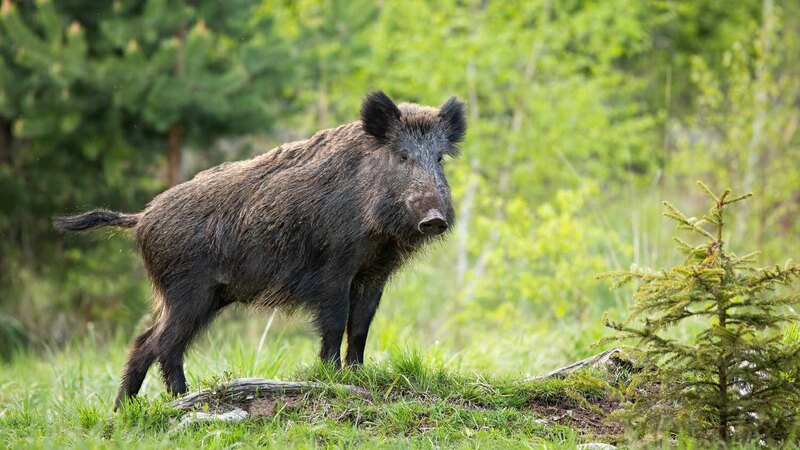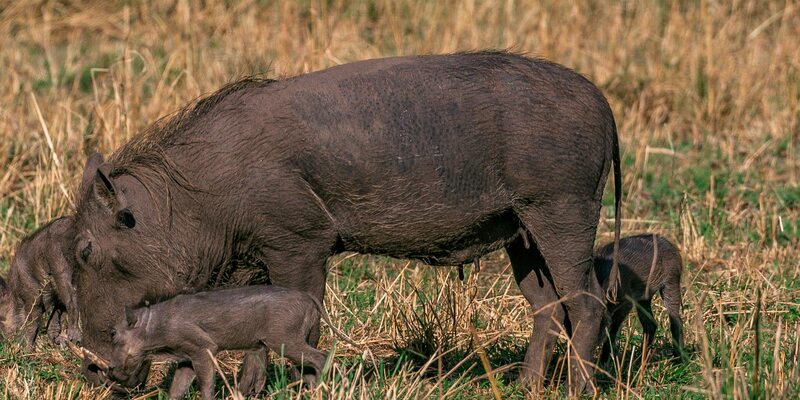Renowned for its exquisite landscapes and rich cultural tapestry, Tuscany houses a thriving population of wild boars. These creatures, deeply embedded in the region's ecosystem, offer an enchanting experience for wildlife enthusiasts. Thus, let us embark on our journey to not merely comprehend them but also observe and profoundly appreciate their presence within Tuscan borders.
1. Understanding the Wild Boars
Wild boars, scientifically known as Sus scrofa, have been a part of Tuscany's wildlife for centuries, weaving themselves into the fabric of the region's ecological tapestry. Known for their robust build, distinctive bristly coats, and formidable tusks, these mammals are not merely inhabitants but key players in maintaining the delicate balance of the ecosystem. Understanding their behavior is a gateway to appreciating their unique role. Wild boars are highly adaptable, displaying complex social structures and behaviors that mirror their intelligence. Observing their interactions, from foraging patterns to communal activities, provides a glimpse into the intricate world of these fascinating creatures.
As we delve deeper into their habitat, it becomes crucial for us to recognize the various ecosystems they inhabit not only dense woodlands but also open meadows. The versatility of Tuscany's wild boars is showcased as these creatures navigate through different landscapes. Each rustle of leaves and snuffling of snouts reveals their natural habitat in the rolling hills and wooded areas. Boars, as they navigate and thrive, emphasize the symbiotic relationship with their surroundings. This highlights the interconnectedness of wildlife to its home landscapes.
- Consideration: When observing wild boars, it's essential to recognize signs of distress or agitation, ensuring a safe distance to avoid unintended disturbances.
- Caution: Avoid attempting to feed or approach wild boars, as this can disrupt their natural behavior and pose risks to both humans and animals.
2. The Habitat of Tuscany's Wild Boars
Tuscany's diverse landscape provides an ideal habitat for wild boars, fostering a harmonious coexistence between these creatures and the natural environment. From dense woodlands to open meadows, the adaptability of wild boars becomes evident in their seamless navigation through different ecosystems. As enthusiasts explore the rolling hills and wooded areas of Tuscany, the true essence of the wild boars' natural habitat unfolds. The rhythm of their movements, the choice of shelter, and their foraging strategies unveil the intricate connection between these creatures and the land they inhabit.

In addition to the physical landscape, understanding the seasonal changes in Tuscany is key to comprehending the dynamic habitat of wild boars. The shifting patterns of vegetation, water sources, and climate influence the boars' movements and behaviors. During dry seasons, their foraging may be concentrated near water sources, while the lushness of spring might encourage wider exploration. A nuanced understanding of these factors enriches the wildlife observation experience, offering a comprehensive view of the wild boars' habitat.
- Fact: Wild boars are crepuscular, meaning they are most active during dawn and dusk.
- Noteworthy Information: Tuscany's wild boars are opportunistic omnivores, adapting their diet based on seasonal availability.
3. Best Practices for Wildlife Observation
While the allure of observing wild boars is irresistible, responsible wildlife observation is paramount for the safety of both humans and animals. Tuscany, recognizing the importance of preserving its natural heritage, designates specific areas for wildlife observation. These zones provide enthusiasts with the opportunity to peacefully witness wild boars in action, respecting the boundaries that allow for undisturbed natural behavior. Practicing responsible tourism in these areas fosters a harmonious coexistence between visitors and the wild inhabitants.
Prioritizing both the ethical consideration and safety of observers as well as wild boars necessitates maintaining a respectful distance. Essential to this understanding is the recognition of signs indicating stress or discomfort in these creatures, allowing enthusiasts to adapt their proximity accordingly. When we prioritize wildlife well-being, visitors then contribute effectively towards sustaining such experiences with minimal impact on Tuscany's wild boar natural behaviors.
- Consideration: Stay on designated trails and observation points to minimize disturbances to the natural habitat.
- Noteworthy Information: Wild boars have a keen sense of smell, and excessive noise can be distressing for them.
4. The Cultural Significance of Wild Boars in Tuscany
Wild boars, beyond their ecological role, bear profound cultural significance in the heart of Tuscany. These creatures are not mere symbols of the region. Rather, they intertwine with local folklore, cuisine, and traditions. Encountering these creatures in the wild takes on added layers when one understands them within a cultural context. Ancient narratives prominently feature tales of wild boars, often symbolizing strength and resilience.
Within the culinary realm, Tuscany upholds a long-standing tradition of incorporating wild boar dishes. Savory stews and cured meats, embracing untamed flavors as an homage to their deep-rooted connection with nature, are just some examples that epitomize this robust culture. Festivals like Suvereto's Palio dei Cinghiali, which honor the wild boar, encapsulate perfectly this profound cultural bond. Beyond the ecological realm, exploring Tuscany's wild boars becomes a poignant journey. It delves directly into the heart of Tuscan identity.
- Fact: The wild boar is a recurring motif in Tuscan art, reflecting its enduring influence on the region's cultural aesthetics.
- Caution: It's essential to approach discussions about wild boars with cultural sensitivity, as they are deeply intertwined with local identity.
5. Wildlife Conservation Efforts

As Tuscany evolves, the conservation of its wild boars becomes paramount in preserving the region's biodiversity. Efforts to protect their habitats involve strategic planning to mitigate the impact of expanding human settlements. Strict regulations on human interaction with wild boars aim to maintain a delicate balance between wildlife and urbanization. Raising awareness about the importance of these creatures is a cornerstone of conservation initiatives, ensuring that both locals and visitors understand the significance of preserving Tuscany's wild boars.
By actively choosing designated wildlife observation areas, visitors minimize disturbances to natural habitats and support conservation initiatives. This proactive measure fosters a sustainable future wherein Tuscany's wild boars maintain their integral role in the region's rich biodiversity by continuing to thrive.
- Noteworthy Information: Tuscany has implemented wildlife corridors to facilitate the movement of wild boars, reducing the impact of habitat fragmentation.
- Consideration: Supporting local conservation organizations financially or through volunteer efforts contributes directly to the well-being of Tuscany's wild boars.
Conclusion
To conclude, venturing near but not uncomfortably close to the wild boars of Tuscany initiates a captivating expedition into nature's core. Comprehending their habitat, unraveling their cultural importance, and recognizing responsible observation's significance enhances this experience. Ultimately, an unforgettable mark is left by untamed beauty in full flourish within this enchanting region.





